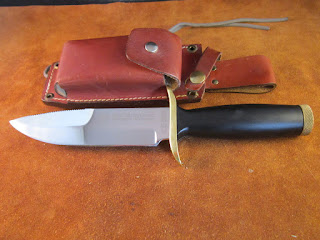1970's Carl Schlieper Survival Knife; Eye Brand mfg. Solingen, Germany

Was a Vendor at the Washington Arms Collectors show in Puyallup, WA recently. I bought more knives that I sold but found this1970's Carl Schlieper Survival Knife. Eye Brand mfg. Solingen, Germany. Carl Schlieper was a German hardware manufacturing business established in Remscheid, Germany in 1793. Eye Brand knives, sometimes called German Eye, have been Hammer forged in Solingen Germany by the Carl Schlieper family for over 100 years. Eye Brand Knives still use forged blades. Hammer forging compresses and realigns the blade steel's grain structure, thereby increasing the toughness and edge holding characteristics of the knife blade. It is a more costly and time consuming process, but worth the effort. www.fitzwillies.com



